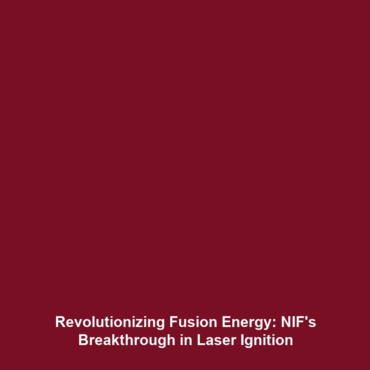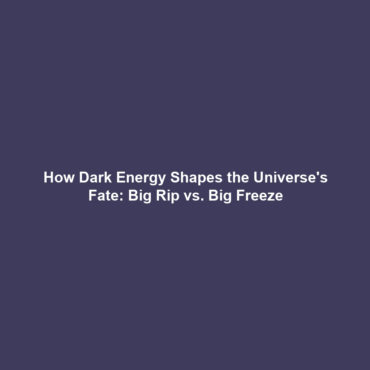Notable Projects: The National Ignition Facility (NIF) in the U.S.
Introduction
As the pursuit for sustainable energy sources grows more urgent, the National Ignition Facility (NIF) plays a pivotal role in advancing fusion energy research. Located in Livermore, California, NIF is a significant project within the U.S. energy landscape, utilizing powerful lasers to achieve near-ignition conditions essential for practical fusion energy. This article delves into the notable projects at NIF, their implications for fusion energy, and the future of energy production.
Key Concepts
Understanding Fusion Energy
Fusion energy is derived from nuclear fusion—the process that powers the sun. At NIF, scientists aim to replicate these conditions on Earth, where hydrogen isotopes combine under extreme pressure and temperature to release significant energy. This process, if harnessed effectively, promises a clean, almost limitless source of energy.
The Role of Lasers in Fusion Experiments
NIF employs a technique called inertial confinement fusion, which utilizes 192 powerful laser beams to compress and heat a small pellet of fusion fuel. The precision and power of these lasers are critical for achieving the necessary conditions for fusion to occur.
Applications and Real-World Uses
The advances made at NIF in achieving near-ignition conditions have several potential applications in the realm of fusion energy. These include:
- Energy Production: Successful ignition could lead to the development of fusion power plants, providing a sustainable energy source.
- National Security: Research at NIF contributes to the maintenance of the U.S. nuclear stockpile by simulating nuclear reactions without the need for nuclear testing.
- Scientific Research: NIF’s findings help improve understanding of plasma physics, which can benefit various scientific fields.
Current Challenges
Despite its advancements, NIF faces several challenges that must be addressed to further its fusion energy goals:
- Technical Limitations: Achieving true ignition remains elusive, requiring substantial technical breakthroughs.
- Financial Constraints: The high costs associated with large-scale fusion experiments can pose challenges for sustained funding.
- Regulatory Hurdles: Navigating regulatory requirements for nuclear research can be complex and time-consuming.
Future Research and Innovations
Future research at NIF aims to overcome current limitations and close the gap toward practical fusion energy. Anticipated innovations include:
- Advanced Laser Technology: Improved laser systems are being developed to increase efficiency and effectiveness in achieving fusion.
- New Materials: Research into materials that can withstand extreme conditions for longer periods is crucial for reactor development.
- Alternative Approaches: Investigation into alternative fusion methods, such as magnetized target fusion, could provide new pathways to energy generation.
Conclusion
The strides made by the National Ignition Facility in achieving near-ignition conditions highlight a significant milestone in the field of fusion energy. As research progresses, NIF remains at the forefront of efforts to harness the power of fusion for sustainable energy solutions. To learn more about the implications of fusion research and related projects, explore our articles on related topics.



